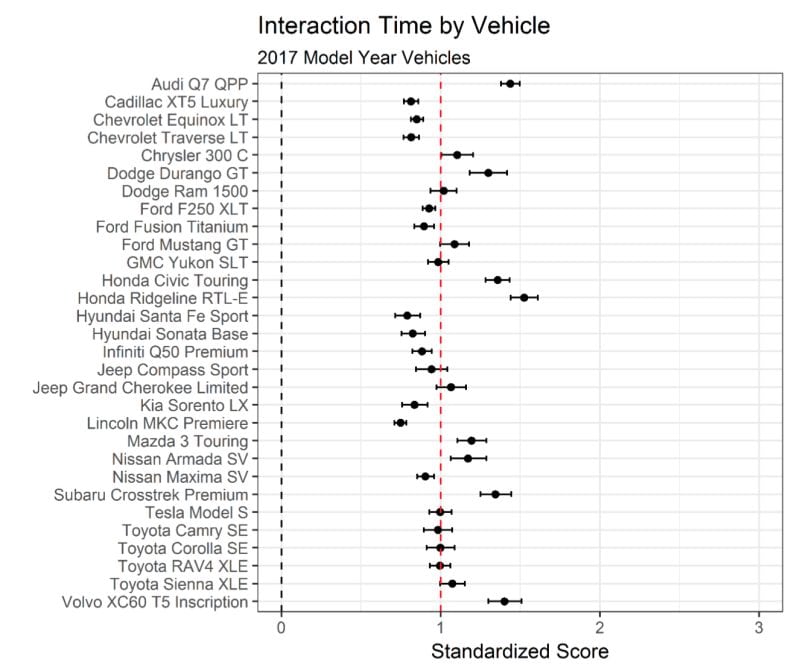A study from the University of Utah has found that the infotainment features in most 2017 model year vehicles are too distracting and should not be enabled when the vehicle is in motion. The study found that in-vehicle info systems take drivers’ attention off the road too often and for too long to be safe.
The study was commissioned by the AAA Foundation for Traffic Safety and lead by U of U Psychology Professor David L. Strayer. Participants were put into 2017 model year vehicles with upgraded infotainment and were tasked any of four items. They were to make a call, send a text message, tune the radio, or program navigation. Participants were randomly assigned vehicles and tasks. An advanced rating scale was used to measure which tasks were most distracting by how they affect visual, cognitive, and manual demands. Low demand was the equivalent to listening to the radio and high demand equivalent to balancing a checkbook in your head while driving.
The researchers found drivers using features such as voice-based and touch-screen technology took their hands, eyes and mind off the road for more than 24 seconds to complete tasks. Previous research from the National Highway Traffic Safety Administration found that the risk of a crash doubles when a driver takes his or her eyes off the road for two seconds.
Of the tasks, programming navigation was the most distracting, requiring an average of 40 seconds to complete (equivalent to driving four football field lengths at 25 mph). Text messaging was the second-most distracting. Tuning audio or making phone calls were equivalent in their low demand of the driver.
The study and more information about it can be found here. The study’s results are here.








